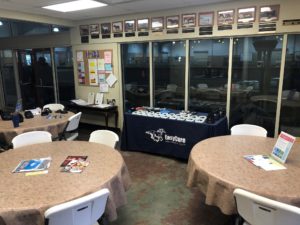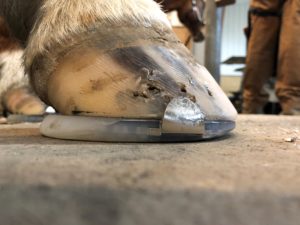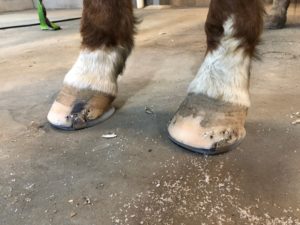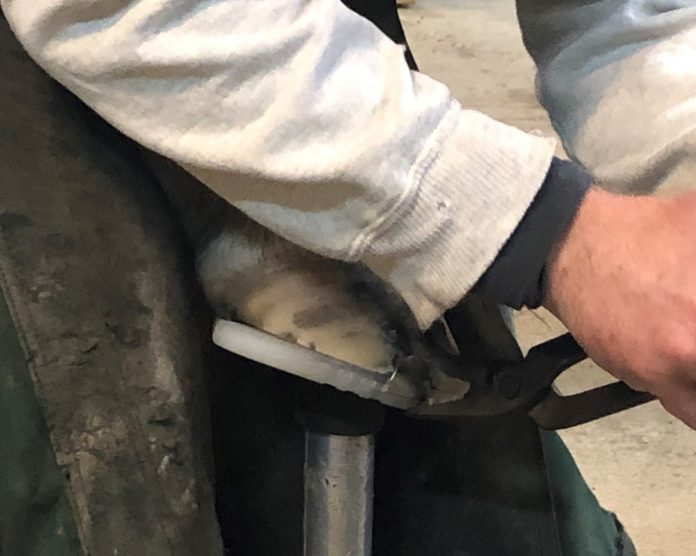One of EasyCare’s values is education. Education for our customers and selves empowers our community. We try to find or create educational opportunities for ourselves and our customers whenever we can.
 Our Veterinarian & Hoof Care Practitioner Dealer Representative, Dan Schroeder, hosted a small EasyCare clinic on Friday, February 28th, in Franklin, Tennessee. Seven local farriers were in attendance for a question-and-answer session in the meeting room of the Saddle Up Therapeutic Riding Center. There was a lot of good discussion about glue-on shoes in general and the very popular EasyShoe Versa, in particular.
Our Veterinarian & Hoof Care Practitioner Dealer Representative, Dan Schroeder, hosted a small EasyCare clinic on Friday, February 28th, in Franklin, Tennessee. Seven local farriers were in attendance for a question-and-answer session in the meeting room of the Saddle Up Therapeutic Riding Center. There was a lot of good discussion about glue-on shoes in general and the very popular EasyShoe Versa, in particular.
Dan Recounts the Event
After our discussion, we all went into the barn to apply EasyShoe Versas onto two horses that a couple of the farriers in attendance take care of regularly. One horse was your average, every-day Quarter Horse, and the other was an older Quarter Horse that had a few soundness issues, low heels, and thin soles.
This older horse would put his right front foot squarely under him when we picked up the left front, but when both feet were on the ground, he would put his right front foot out in front of him. He would also take a step forward and stand with his heels on the edge of the mat and his toe on the concrete, giving himself a wedge.
 I pointed this out to the attendees, and we decided that he would be accepting of a wedge shoe. I told them that we would not need to attach a wedge pad. Instead, we would use a grinder to create a wedge pattern on the Versa.
I pointed this out to the attendees, and we decided that he would be accepting of a wedge shoe. I told them that we would not need to attach a wedge pad. Instead, we would use a grinder to create a wedge pattern on the Versa.
When we had finished applying the shoe, the horse felt for the adjustments we had made, and then stood comfortably with his leg directly under him.

One of the farriers that had been working on him commented that this seemed to be the best shoeing package that he had put on this horse yet. All of the attendees were impressed by how comfortable the horse seemed on his new Versas, and remarked that it was cool to be able to grind a shoe down to form a wedge shape.
The other feet were fairly straightforward with only minor modifications needed. All participants got a chance to drive some nails, and to look at the fit and modification of the shoe.
 On one foot, the shoe was just a touch too wide, but the length was nice. We were able to take the shoe to the anvil, give it a few taps with a hammer, and narrow it to create a better fit. The attendees liked how simple the process was to create the most appropriate fit.
On one foot, the shoe was just a touch too wide, but the length was nice. We were able to take the shoe to the anvil, give it a few taps with a hammer, and narrow it to create a better fit. The attendees liked how simple the process was to create the most appropriate fit.
All in all, the day was a success. I would say it was a good few hours spent educating these farriers who can then go out to educate their clients and colleagues. The goal is to spread the word so we can help as many horses as possible.





